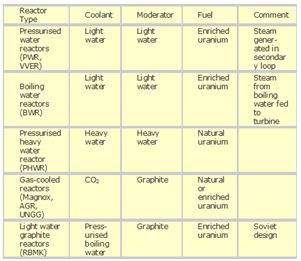My readers are the best. The moment I mentioned that the events surrounding the nuclear reactors at Fukushima were confusing and weren't receiving a good coverage, reader Canukistani sent me the following insightful article on what happened. Even somebody so technologically challenged as I am can understand this clear explanation. I find this article to be very helpful and wanted to share it with you. Enjoy!
Fukushima Reactor Design
Poor reporting including the New York Times has been the norm on this subject. This has been legitimately criticized by MIT, GE and others. I decided to write this article after Fox News displayed a map of nuclear power plant locations in Japan where one of the sites is actually a rock and roll night club (Shibuyaeggman).
To understand the design we have to go back to the fifties when Admiral Rickover wanted build nuclear powered submarines for the US navy. There were two competitors, Westinghouse and General Electric. Westinghouse won and GE was left with a product which had a lot of R&D expenses and no customers. They decided to remarket it as a commercial electricity producing product.
According to Robert Cowan in an article entitled “Nuclear Powered Reactors, a technological lock-in”:
Recent theory has predicted that if competing technologies operate under dynamically increasing returns, one, possibly inferior, technology will dominate the market. The history of nuclear power technology is used to illustrate these results. Light water is considered inferior to other technologies, yet it dominates the market for power reactors. This is largely due to the early adoption and heavy development by the U.S. Navy of light water for submarine propulsion. When a market for civilian power emerged, light water had a large head start, and by the time other technologies were ready to enter the market, light water was entrenched.
Here is a chart of the various reactor types. The American government had a monopoly on the enrichment of uranium at the time so there were geopolitical reasons for pushing the light water reactor designs since any foreign purchaser would be on a short leash with respect to fuel.
Submarine nuclear reactors have to be squat in order to fit in the boat. They also have to separate coolant from the generator steam to protect the crew who are in close proximity.
In order to build a commercial version you have to deal with the problem of scaling. For higher heat generation in the rods which translates into more steam and ultimately more electricity, you need more uranium but this requires a different geometry. The volume of a sphere increases faster than the surface area which puts a restriction on the amount of uranium.



2 comments:
None of these mentions the pebble bed nuclear reactor, which seems to be much safer intrinsically than any of the types listed here.
Thanks for this blog. Yes, the Fukushima disaster goes back to Admiral Rickover's/GE's initial Mark I design for the Nautilus nuclear submarine.
The character of the nuclear industry in Japan was formatively shaped the anti-communist obsessions of the United States.
The first promoter of nuclear power, Shoriki Matsutaro, was also the recipient of Japan's first commercial television license. After spending two years in a prison of the occupying American forces, Shoriki was set free to help shape Japan according to US specifications, including the embrace of Eisenhower's vision of "Atoms for Peace."
See Anthony J. Hall's, "From Hiroshima to Fukushima, 1945-2011" at
http://www.veteranstoday.com/2011/03/28/from-hiroshima-to-fukushima-1945-2011/
Post a Comment